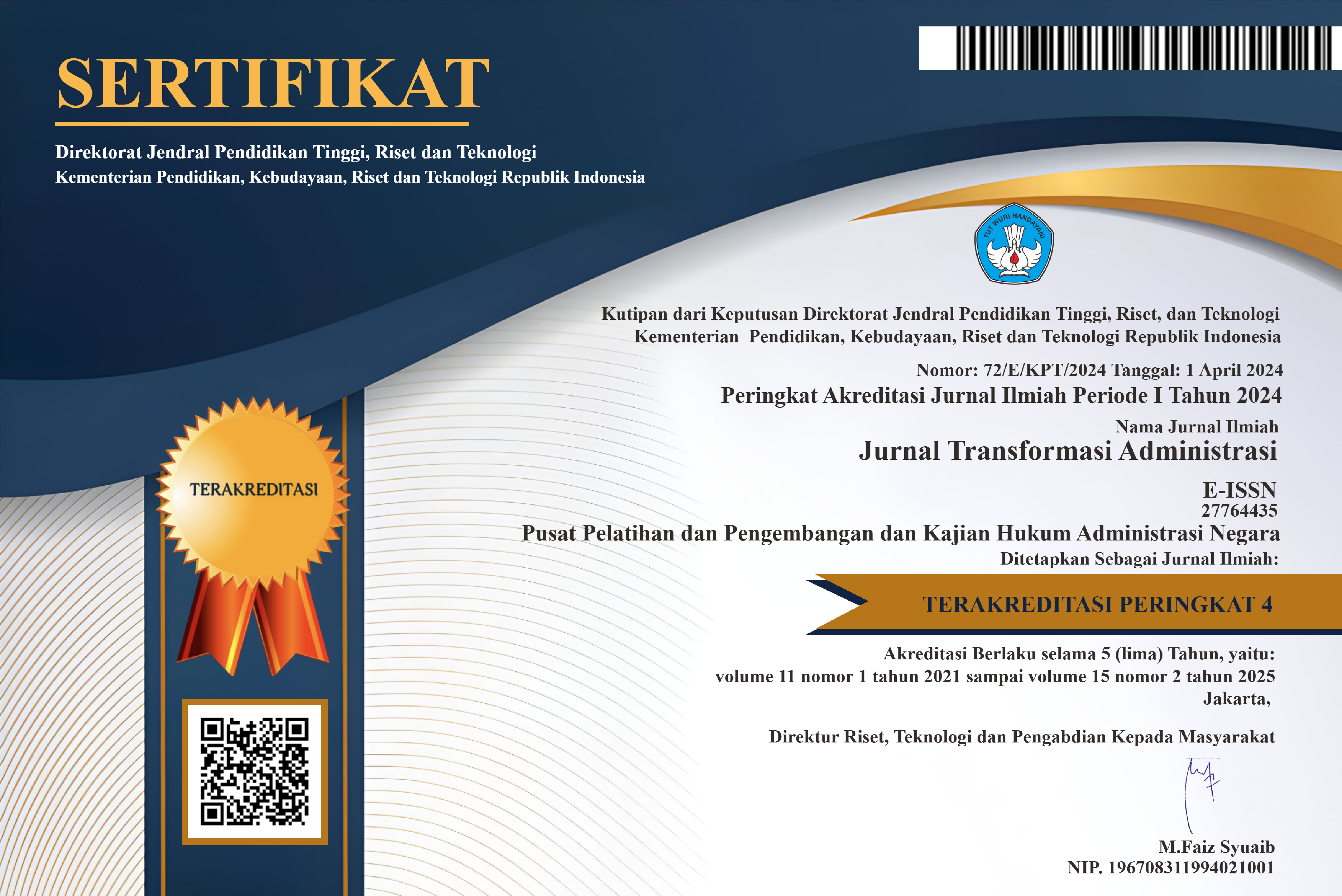Assessing Poverty In South Kalimantan Using Purchasing Powerparity Approach
Keywords:
South Kalimantan, domestic poverty line, purchasing power parity, poverty calculation, poverty line conversionAbstract
The rigorous and sustainable monitoring and evaluating the poverty rates are inevitable in measuring the efficacy of a nation’s development. The poverty rate itself depends on many influential variables, one of which is the poverty threshold/line. Concerning its high impact on the poverty rate produced, it is essential to assess the poverty line measurement in order to yield a valid and robust poverty rate. This paper aims to investigate the poverty lines in Indonesia especially in South Kalimantan utilizing the Purchasing Power Parity approach. In the situation of a shortage of poverty line comparison literature, this paper tries to fill such gap. This paper utilizes data from the World Bank (The World Development Indicators and The International Comparison Program) and Statistics Indonesia’s website. This paper obtains some findings; in a particular time, the South Kalimantan’s poverty line was above the World Bank $1.90-a-day standard. However, most of the times, such domestic poverty lines were below the comparator. Therefore, this paper exists not only to contribute to enriching the previous literature but also presents the other perspective to improve the construction of the domestic poverty line.
References
Estudillo, J.P., & Otsuka, K. (2015). Moving out of Poverty: An Inquiry into Inclusive Growth in Asia. London, UK: Routledge
Estudillo, J.P., Sawada, Y., Otsuka, K. (2008) Poverty and Income Dynamics in Philippine Villages, 1985-2004. Review of Development Economics, 12(4), 877–890. DOI:10.1111/j.1467-9361.2008.00458.x
Fereira, F. H. G., Chen, S., Dabalen, A. L., Dikhanov, Y. M., Hamadeh, N., Jolliffe, D. M., Narayan, A., Prydz, E. B., Revenga, A. L., Sangraula, P., Serajuddin, U., Yoshida, N. (2015). A global count of the extreme poor in 2012: data issues, methodology, and initial results. Policy Research working paper; no. WPS 7432. Retrieved from http://documents.worldbank.org/curated/en/360021468187787070/A-global-count-of-the-extreme-poor-in-2012-data-issues-methodology-and-initial-results
Gentilini, U., and Sumner, A. (2012), What Do National Poverty Lines Tell Us About Global Poverty? IDS Working Papers, 2012: 1–48. http://doi.org/10.1111/j.2040-0209.2012.00392.x
Haughton, J., & Khandker, S. R. (2009). Handbook on Poverty+ inequality. World Bank Publications. https://openknowledge.worldbank.org/handle/10986/11985
Jolliffe, D. M., and Prydz, E. B. (2015). Global Poverty Goals and Prices: How Purchasing Power Parity Matters. Policy Research Working Paper; No. 7256. World Bank, Washington, DC. Retrieved from https://openknowledge.worldbank.org/handle/10986/21988
Kakwani, N., & Son, H. H. (2016). Global poverty estimates based on 2011 purchasing power parity: where should the new poverty line be drawn?. Journal of Economic Inequality, 14(2), 173. http://doi.org/10.1007/s10888-016-9322-x
Khomsan, A., Dharmawan, A.H., Saharudin, S., Alfiasari, A., Syarief, H., Sukandar, D. (2015). Indikator Kemiskinan dan Misklasifikasi Orang Miskin. Jakarta, Indonesia: Pustaka Obor
Klasen, S., Krivobokova, T., Greb, F., Lahoti, R., Pasaribu, S. H., Wiesenfarth, M. (2016). International income poverty measurement: which way now? Journal of Economic Inequality, 14(2), 199. https://doi.org/10.1007/s10888-016-9324-8
Lanjouw, J., O. 1999. Demystifying Poverty Lines. United Nations Development Programme, New York. Retrieved from http://siteresources.worldbank.org/PGLP/Resources/LanjouwDemystifyingPovertyLines.pdf
Lustig, N. and Silber, J. (2016). Global Poverty Lines: An Introduction. Tulane Economics Working Paper Series, 2016: 1603. Retrieved from http://econ.tulane.edu/RePEc/pdf/tul1603.pdf
Marbun, D., Suryahadi, A. 2009. Kriteria Kemiskinan Konsumsi: Praktik di Indonesia dan Beberapa Catatan. Jurnal Analisis Sosial, Vol. 14(2), 13-30. Retrieved from https://media.neliti.com/media/publications/543-ID-kriteria-kemiskinan-konsumsi-praktik-di-indonesia-dan-beberapa-catatan.pdf
MacPherson, S., & Silburn, R. (1998). The meaning and measurement of poverty. Poverty: A persistent global reality, 1-19.
Ravallion, M., Chen, S., Sangraula, P. (2009). Dollar a Day Revised. The World Bank Economic Review, Vol. 23, No. 2, pp. 163-184. Retrieved from https://openknowledge.worldbank.org/handle/10986/4499?show=full
Statistics Indonesia. (2017). Indeks Harga Konsumen dan Inflasi Bulanan Indonesia, 2005-2017. Retrieved from https://www.bps.go.id/linkTabelStatis/view/id/907
Statistics Indonesia. (2016). Penghitungan dan Analisis Kemiskinan Makro Indonesia 2016. Jakarta, Indonesia: Statistics Indonesia
Statistics Indonesia. (2013). Jumlah dan Persentase Penduduk Miskin, Garis Kemiskinan, Indeks Kedalaman Kemiskinan (P1), dan Indeks Keparahan Kemiskinan (P2) Menurut Provinsi, 2007-2009 (Maret), 2010-2011, 2012 (Maret dan September). Retrieved from https://www.bps.go.id/linkTabelStatis/view/id/1489
Statistics Indonesia. (2009). Analisis Kemiskinan, Ketenagakerjaan dan Distribusi Pendapatan. Jakarta, Indonesia: Statistics Indonesia
Statistics of South Kalimantan Province. nd. Berita Resmi Statistik Inflasi. Banjarmasin, Indonesia: Statistics of South Kalimantan Province
Statistics of South Kalimantan Province. 2017. (SUSENAS 2016). Unpublished raw data
Statistics of South Kalimantan Province. 2016. Persentase Penduduk Miskin (P0) Provinsi Kalimantan Selatan Tahun 1996-2016. Retrieved from https://kalsel.bps.go.id/dynamictable/2016/12/19/864/persentase-penduduk-miskin-p0-provinsi-kalimantan-selatan-tahun-1996-2016.html
Statistics of South Kalimantan Province. 2016. Jumlah Penduduk Miskin Provinsi Kalimantan Selatan Tahun 1996-2016. Retrieved from https://kalsel.bps.go.id/dynamictable/2016/12/20/870/jumlah-penduduk-miskin-provinsi-kalimantan-selatan-tahun-1996-2016.html
Statistics of South Kalimantan Province. 2016. Garis Kemiskinan Provinsi Kalimantan Selatan Tahun 2000-2016. Retrieved from https://kalsel.bps.go.id/dynamictable/2016/12/21/872/garis-kemiskinan-provinsi-kalimantan-selatan-tahun-2000-2016.html
Susilowati, S., H. 2010. Pendekatan Skala Ekivalensi Untuk Mengukur Kemiskinan. Forum Penelitian Agro Ekonomi, Vol. 28 (2), 91-105. http://dx.doi.org/10.21082/fae.v28n2.2010.91-105. Retrieved from http://ejurnal.litbang.pertanian.go.id/index.php/fae/article/view/3908
Suyanto, B. (2001). Kemiskinan dan Pemberdayaan Masyarakat Miskin. Masyarakat, Kebudayaan dan Politik, 14(4), 25-42.
World Bank. (2017). World development indicators: 1960-2017. http://data.worldbank.org/data-catalog/world-development-indicators
World Bank. (2017). International Comparison Program. http://siteresources.worldbank.org/ICPINT/Resources/270056-1183395201801/2011-International-Comparison-Program-results.xlsx
World Bank. nd. Should I use national or international poverty lines? Retrieved from https://datahelpdesk.worldbank.org/knowledgebase/articles/193309-should-i-use-national-or-international-poverty-line















